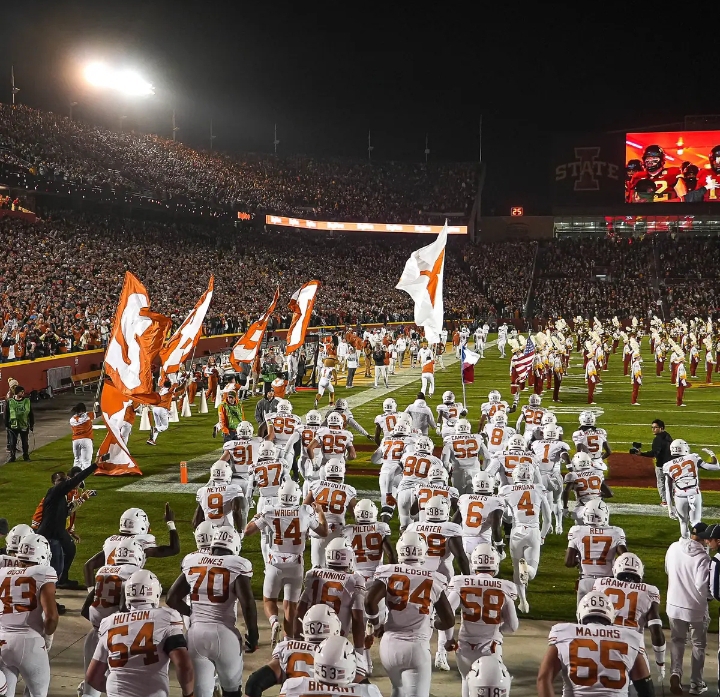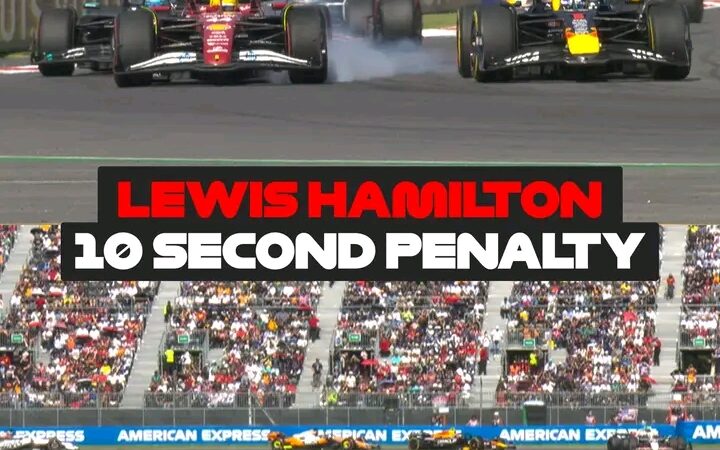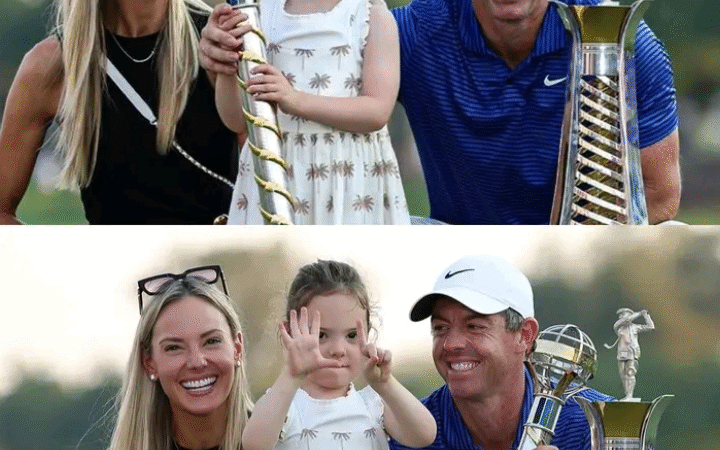The Best Teams That Money Could Buy

The best team money can buy
Four College Football Playoff teams used cash payments from fan “pools” to build their rosters, showing just how much money changes hands in college sports.
Several Texas Longhorns players will be in action against Iowa State. The stadium is full of fans. The Texas Longhorns during a game against the Iowa State Cyclones in November. The Texas workers’ compensation plan helped set a precedent for unions. David A. Fahrenhold and Billy Witts
David Farenthold reports from New Orleans as Texas and Washington prepare for the College Football Playoff semifinals. Billy Witz reports from Los Angeles as Michigan and Alabama prepare.
At the end of 2021, the once mighty Texas Longhorns lost six games for the first time since 1956, ending a 5-7 football season. “We need bigger players,” coach Steve Sarkisian said.
This offseason, the Texans found a new legal, or at least new, way to recruit them: cash. A new tax-exempt charity founded by Texas football fans called Horns With Heart has shocked the sports world by promising to pay a Longhorn offensive lineman $50,000 a year.
Went. “We had no money growing up, so $50,000 was amazing.” said Cameron Williams, a 6-foot-4, 369-pound lineman. A giant that even other linemen call “Big”. He committed to play at Oregon that year, but transferred to Texas a week after receiving the charity offer. He said money was one of the reasons. “I was just thinking about helping my family.”
Texas searched for five offensive linemen. They won seven and began a rebuilding process that would lead them to the four-team College Football Playoff two years later. The Longhorns play Washington in the Sugar Bowl on Monday night.
Cameron Williams, wearing a Texas Longhorn jersey, watches the game. Texas Longhorns offensive lineman Cameron Williams during a game against the Kansas State Wildcats in November. Credit… Getty Images via Scott Winters/Icon Sportswire
A tactic that has served Texas well for more than two years, including using money from the “fan base” to track and retain players, has gone from an anomaly to a staple of major college sports.
A team called the N.C.A.A. pays “name, image and likeness”. The July 2021 regulations, along with the easing of transfer restrictions, have transformed the way we build high-performing teams. But they also received warnings from the Internal Revenue Service, which threatened to create an imbalance within the team and a culture of secrecy and tension between the team and the school. It also undermines aspirations for gender equality by favoring male athletes. One way to measure the change is to look at the teams behind the four football playoff schools: Michigan, Texas, Washington and Alabama. They all got to this point by adapting and leveraging the money that comes from fans to players. “Every college football team has a different approach to the NIL,” said offensive lineman Trevor Keegan, whose Michigan team plays Alabama in the Rose Bowl on Monday.
Michigan quarterback Trevor Keegan puts a hand on Michigan coach Jim Harbaugh’s shoulder after the game. Michigan coach Jim Harbaugh celebrates with offensive lineman Trevor Keegan after the Iowa game. Credit…AJ Mast/Associated Press
The four semifinalist teams compete in a turbulent open market for college talent from more than 140 countries.
The players said the group payments were a welcome and long-awaited addition to their scholarships. “The least they can do is pay us a little bit for the time we put in,” Alabama wide receiver Isaiah Bond said. “Sometimes you go like you’re 85, sometimes you go like you’re 19 or 20,” he said, describing the physical toll the game can have on players. Bond said he didn’t realize how much money college football brings to the school. The latest estimates put it at $131 million a year. “What they get back is nothing compared to what they earn,” he said. “But it helps.”
Texas’ plan to pay linebackers, dubbed the “Pancake Factory” because linebackers flatten defenders like pancakes, helped set a precedent dozens of teams followed.
The first is how you justify the payment. N.C.A.A. It still prohibits fans from paying players to play.
The group, known as the Texas One Fund, did so using a new system that allows companies seeking support to pay players for the rights to their name, image and likeness. The team changed that. They were lucky enough to buy the rights to a player to play for their school. Fans cheer for the Texas Longhorns against Oklahoma State. Some of them wore orange Texas shirts. Texas paid Longhorn players $14 million through 2021, according to school statistics. Credit… Jerome Miron/USA Today Sports via Reuters
Texans team vice president Britt Peterson asked donors, “How much more fun is this than it used to be?” he asks. He encourages them to feel personal responsibility for the success of this team. “This is your team.”
The group soon absorbed the system of names, images and likenesses. Texas teams have paid Longhorn players $14 million since 2021, according to school statistics. That’s 64 percent of all money paid to Texas athletes from all sources, and more than all the money from shoe companies, sports drinks and other brands in the system combined. As a result, the cash flow back to the players as supporters doesn’t really matter. Mr. Williams, an offensive lineman, bought his mother her first iPhone. Wide receiver Adoni Mitchell, who caught the ball in Georgia’s last two championship games, got his 2-year-old daughter what she wanted for Christmas.
“I gave him the kitchen. “This is his favorite thing to do,” he said. “I called him and he said, ‘I’m making carrots!’ say
The Texas group set a different model that was followed by more than 70 other groups. It was organized as a tax-exempt charity, meaning donors received tax deductions. These organizations have justified their charity work by paying athletes to visit sports camps and hospitals or by posting about the nonprofit on social media.
But now these charities have a problem. Their’s.
After initially granting tax breaks to dozens of groups, the I.R.S. He issued a memo stating that the club would not be eligible for tax relief because its purpose was to pay players and not to serve the public interest.
Andrew D. Morton, a non-profit organization. Handler Thayer, an attorney for the company, cites a section of the tax code that describes tax-exempt donations. Mr. Morton said the I.R.S. Failure to change course may result in your organization being shut down or fined.
The Texas-based group said it is considering changes that would drastically alter costs and donate more money directly to other charities. For now, Mr. Peterson said, the group is looking for a charity worthy enough to pay the football players. But the club has already paid $1.8 million to soccer players this fall. What part-time charity job could justify this?
“If you take the football away, it’s over,” Peterson said. But he said the team cannot control football. Football represents 81% of total expenditure.
Alabama football players celebrate during the game. The Alabama Crimson Tide is one of the most successful teams in college football. credit… Mike Stewart/Associated Press
Alabama, one of the most successful teams in college football, was initially resistant to change. Coach Nick Saban even accused rival Texas A&M of using him to recruit players. “A&M bought every player on the team,” he said in May 2022. “We didn’t buy a single player.”
Alabama played Texas A&M that year and lost for the second year in a row. Next season, Alabama has two new teams that reflect another important aspect of this burgeoning industry: mystery.
Most teams maintain a competitive edge by saying virtually nothing about themselves and making sure their competitors (and athletes) don’t know exactly which players are being paid. The for-profit company, called Yea Alabama, discloses few details about its funding or expenses. The company refuses to describe itself as a group and simply refers to itself as “individuals”.
Another Alabama organization is a tax-exempt charity called the Walk of Champions. Elliot Maisel, one of the board members, told The Times earlier this month that the university told staff how much to pay each team. Mr. Maisel estimated that the football team’s payroll was $2,500 per player per month. “Everything is decided by the coaches and sports departments. We don’t have that discretion. We don’t want that,” Mr. Maisel said.
Close-up of Alabama football coach Nick Saban. Alabama coach Nick Saban originally called the N.I.L. He went against the trend. Team.Credit…Mike Stewart/Associated Press
NCAA rules prohibit university employees from “entering into or negotiating contracts” on behalf of student athletes. But the organization has shown little interest in putting pressure on teams too close to the school. The latest proposal would allow schools to take over collaborative efforts and pay athletes directly.
On Saturday, John Parker Wilson, a member of Maisel’s staff and former Alabama quarterback, disputed Maisel’s comments, saying the staff is “not controlled, directed or managed” by the university. He said the organization paid only two players.
At the same time, Mr. Maisel changed his accounts. He said he joined the collective board in February but had no idea how the money was being spent.
Michael Penix Jr. coach Kalen DeBoer talks on the court after Washington’s win over Oregon. Junior boxer Michael Penix. Coach Kalen DeBoer after Washington’s win over Oregon in December. Credit…David Becker/Associated Press
Teams not only attract players, they retain them and help balance the appeal of the NFL.
A year ago, Washington’s football success saw a resurgence at a surprising pace. Entering a hectic schedule on and off the field, new coach Kalen DeBoer and new quarterback Michael Penix Jr. have led the Huskies to their second-best record in 22 years. But Mr. Penix and several other key members of the revival seemed likely to forgo their remaining eligibility and join the NFL. This means Washington may take a step back after its great leap forward.
Then another rally started. Montlake Futures, a Washington-based group, has struggled to take control of the chaotic startup industry. So about a year ago, Andrew Miner, whose career as a nonprofit fundraiser in Seattle included nearly a decade raising millions of dollars for the Washington Institute for Development, was tapped to lead the program. Miner didn’t want to cash in after Penix and others left for the NFL, which offers a minimum salary of $750,000 this season. “It wasn’t a dollar bill,” he said. No attempt was made to harmonize the bill with a dollar value.
Instead, the team said it has devised a plan to increase the value of its players’ endorsements by working with non-profit organizations that allow their brands and legacies to shine in the community as they turn professional. According to Minear, the revenue of the team, which includes athletes from all sports, is about four times the 2022 federal offer of $2.02 million. (According to the Seattle Times, the Washington Athletic Department has projected an $8 million shortfall in fiscal year 2024.)
“He takes us to Oregon, Alabama, L.S.U. When you look at other schools and what they’re doing, we’re not at the top of the list,” Miner said. “But whatever we do can be effective.”
Dillon Johnson, wearing a purple and gold football jersey, runs down the field carrying the ball.
Washington is set to pursue Dylan Johnson in November. Source: Lindsay Wasson/Associated Press
Even though Montlake Futures didn’t have much money, Mr. Miner had something he could sell to college programs. That’s what fixed odds were in a big league city like Seattle, where sports were lacking. Not Tuscaloosa.
“The way they did it and the way they allowed us to work with non-profits as well as random businesses was great,” offensive lineman Troy Potanu said. He said money is a factor in his success, but not everything.
The plan kept the players in Washington. Mister. Penix announced his return last December and recently finished second in the Heisman Trophy. He was eventually joined by wide receiver Rim Odunze and game-changer Bralen Treece, who became Mr. Along with Penix, he is considered a first-round pick. “All these guys could have left last year,” Dillon Johnson said. “But they came back and took some money and helped with the exchange. So I think that helped them.
And everyone else on the undefeated Huskies.
Several Michigan football players wearing blue uniforms and celebratory corn on the field. Rod Moore celebrates after halftime during a game against the Ohio State Buckeyes at Michigan Stadium last November. Source…Gregory Shamus/Getty Images
Participating in the new era of college athletics can pay off. When Michigan safety Rod Moore called his catch a “game” to reporters after an interview with Ohio State, Mr. Moore and the school’s marketing department trademarked the term and issued a T-shirt with the phrase on it. Mr. Moore is a textbook example of how name, image and publicity rights work. But not all Wolverines want the spotlight or their moment of stardom. Offensive lineman Mr. Keegan is one of the team captains but is not a brand ambassador. “I’m not really a social media person,” she says. But he’s still going strong, telling Sports Illustrated earlier in the season that he expects to make between $225,000 and $500,000 in his final college football season with Michigan’s Champions Circle and Hail Impact teams.
Michigan, like Washington, is in the N.I.L. If revenue sharing for Wolverines coach Jim Harbaugh becomes a reality, it could be an indicator of what a booming future could look like for college football. Money is spread evenly in the locker room, with star players earning more through personal endorsements.
Hail Impact was founded as a non-profit organization with the goal of paying a base salary to every football player in Michigan. The Champions Circle is a for-profit organization and last year created another annual fund to raise money to persuade players who plan to leave the NFL. Returns While many teams rely on donors for funding — a model some say is unsustainable — Circle of Champions has tried to raise money by selling expensive experiences to good fans in Michigan. Colson Jr. speaks into the microphone during a press conference.
Junior Colson speaks to reporters during a press conference in Los Angeles. Credit… Ryan Sun/Associated Press
For example, a package was advertised that included running and jumping through the stadium tunnel with players before an Ohio State game, joining the Wolverines for a team dinner and touching the “Go Blue” flag, a Michigan football tradition since 1962. . Price: $65,000.
“It’s a special experience for some guys,” said Colson, a junior linebacker. “It’s something they want to do and it’s something they appreciate because they love being at Michigan. They love being part of Team Michigan. We are pleased to be with them.”
Correction January 6, 2024: An earlier version of this article incorrectly stated which product Texas offensive lineman Cameron Williams purchased for his mother. He bought her her first iPhone, not her first phone.
If we discover an error, we will correct it and confirm it. If you find an error, please report it to [email protected]. Find out more
David A. Farenthold is an investigative journalist who writes about nonprofit organizations. He worked as a journalist for 20 years. David A. Parent Hold





